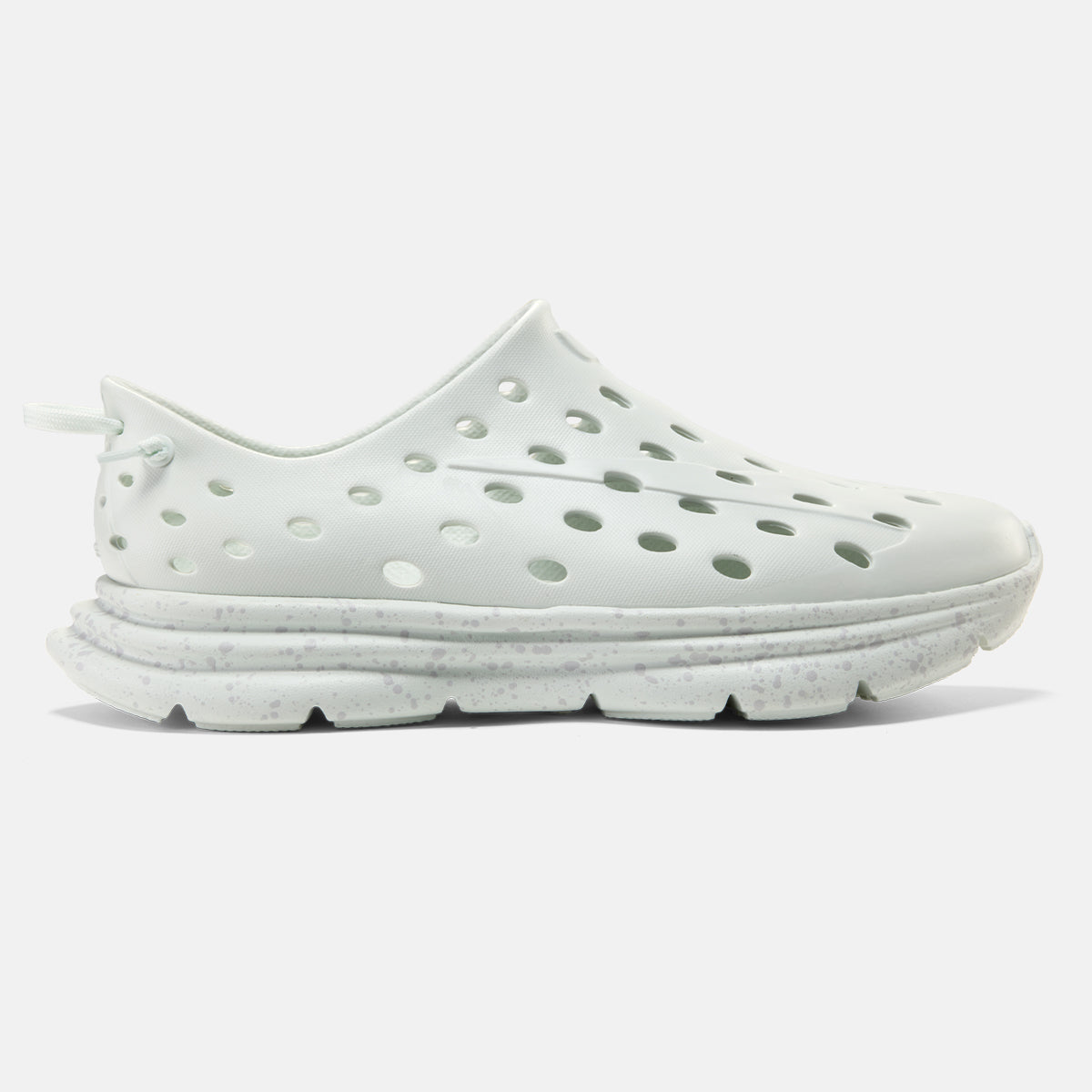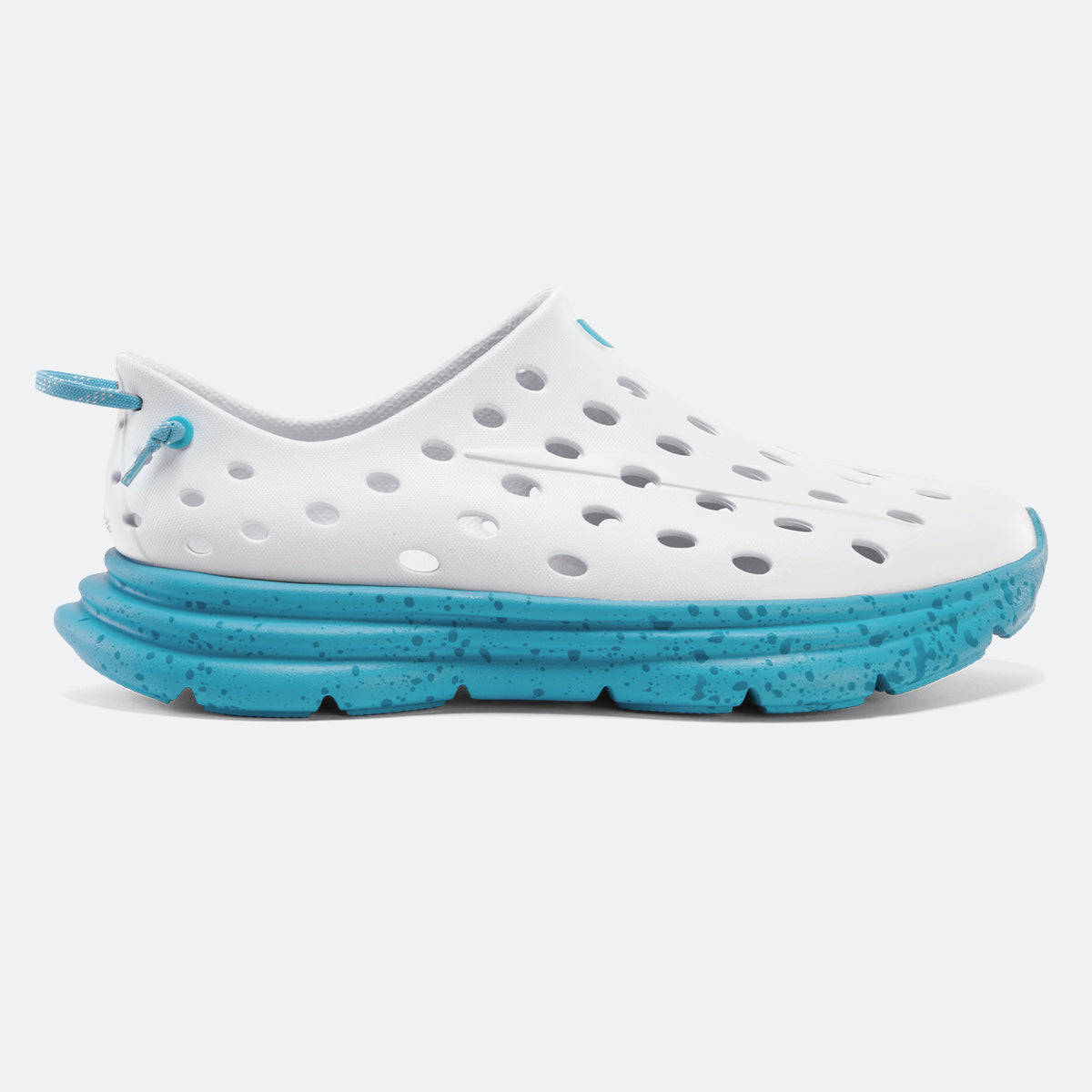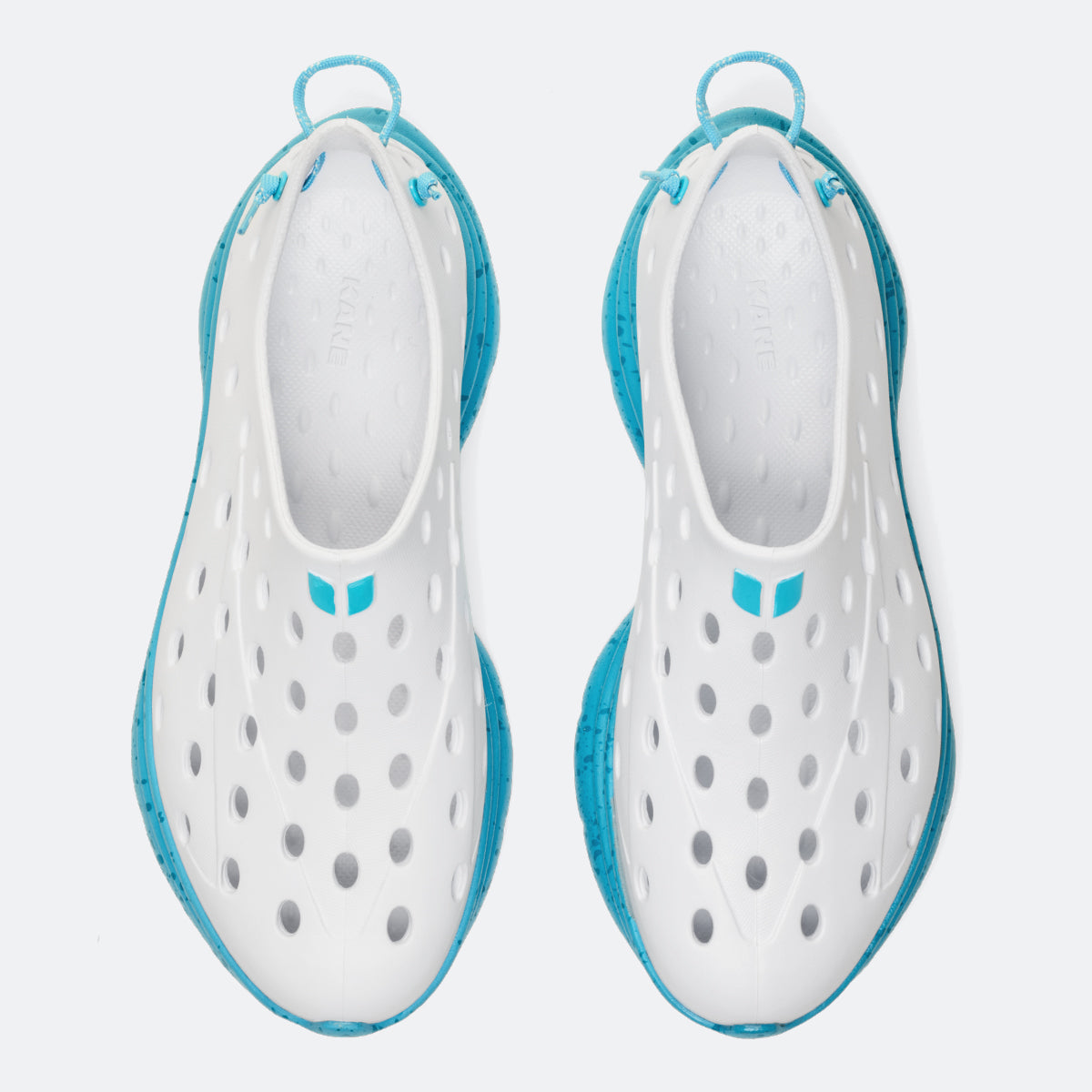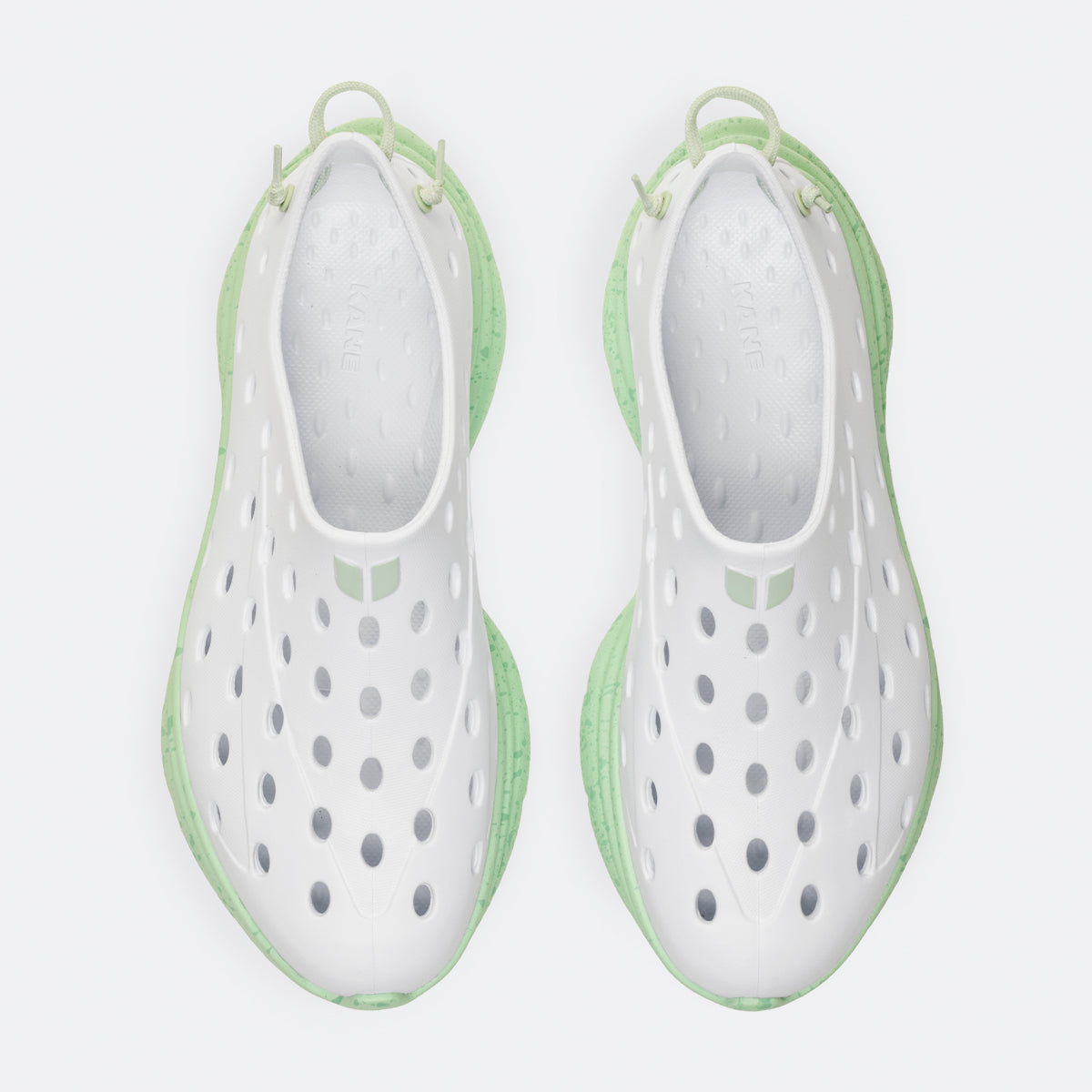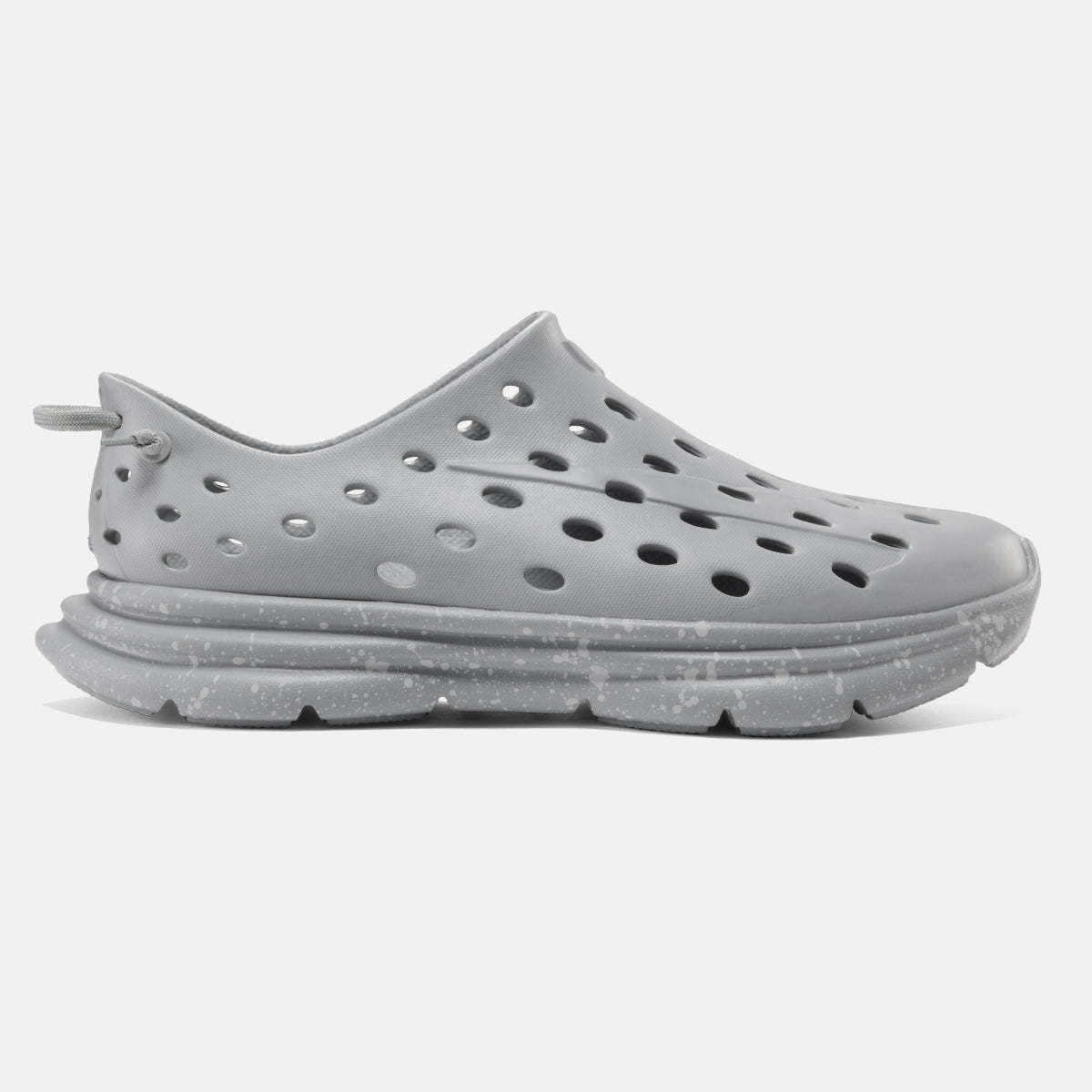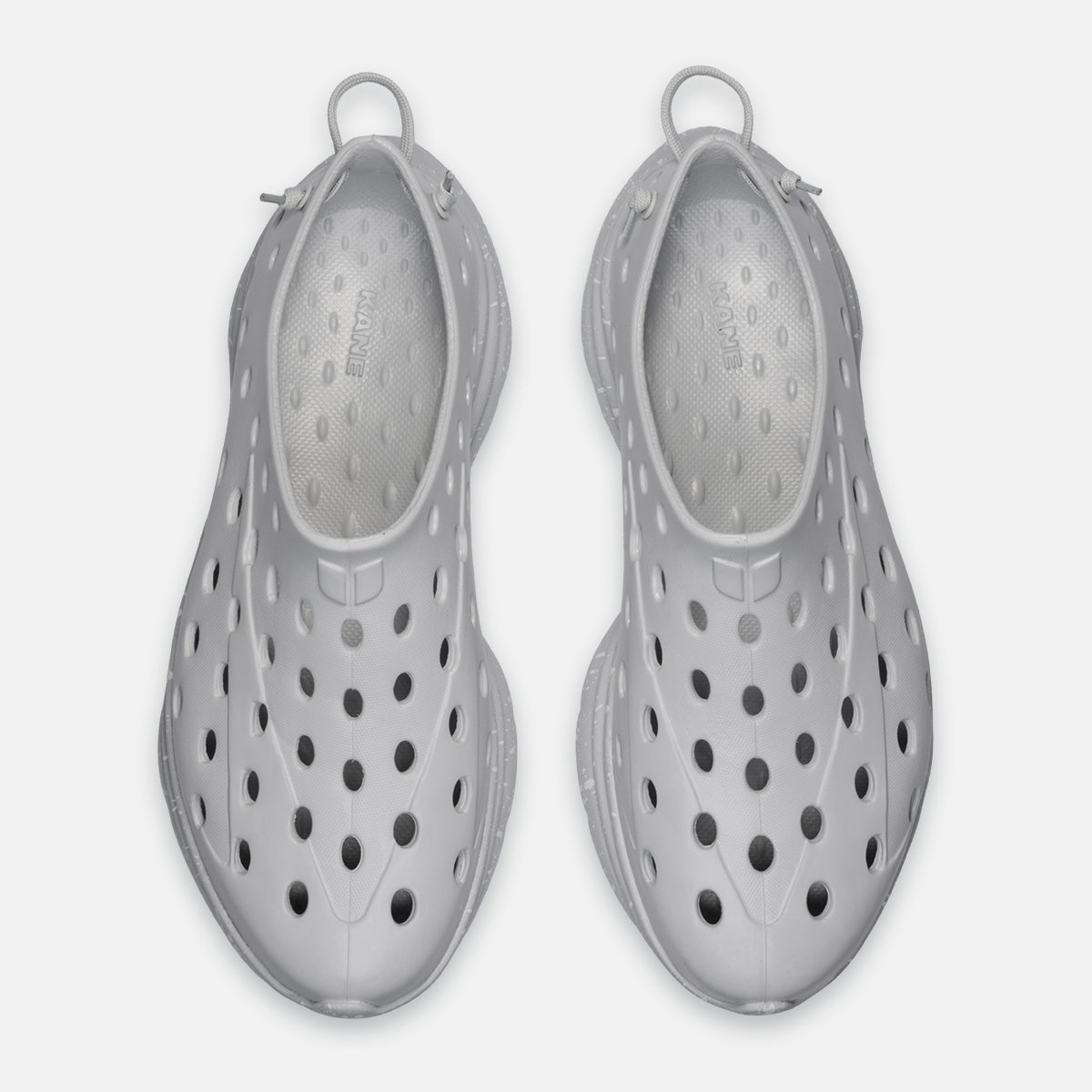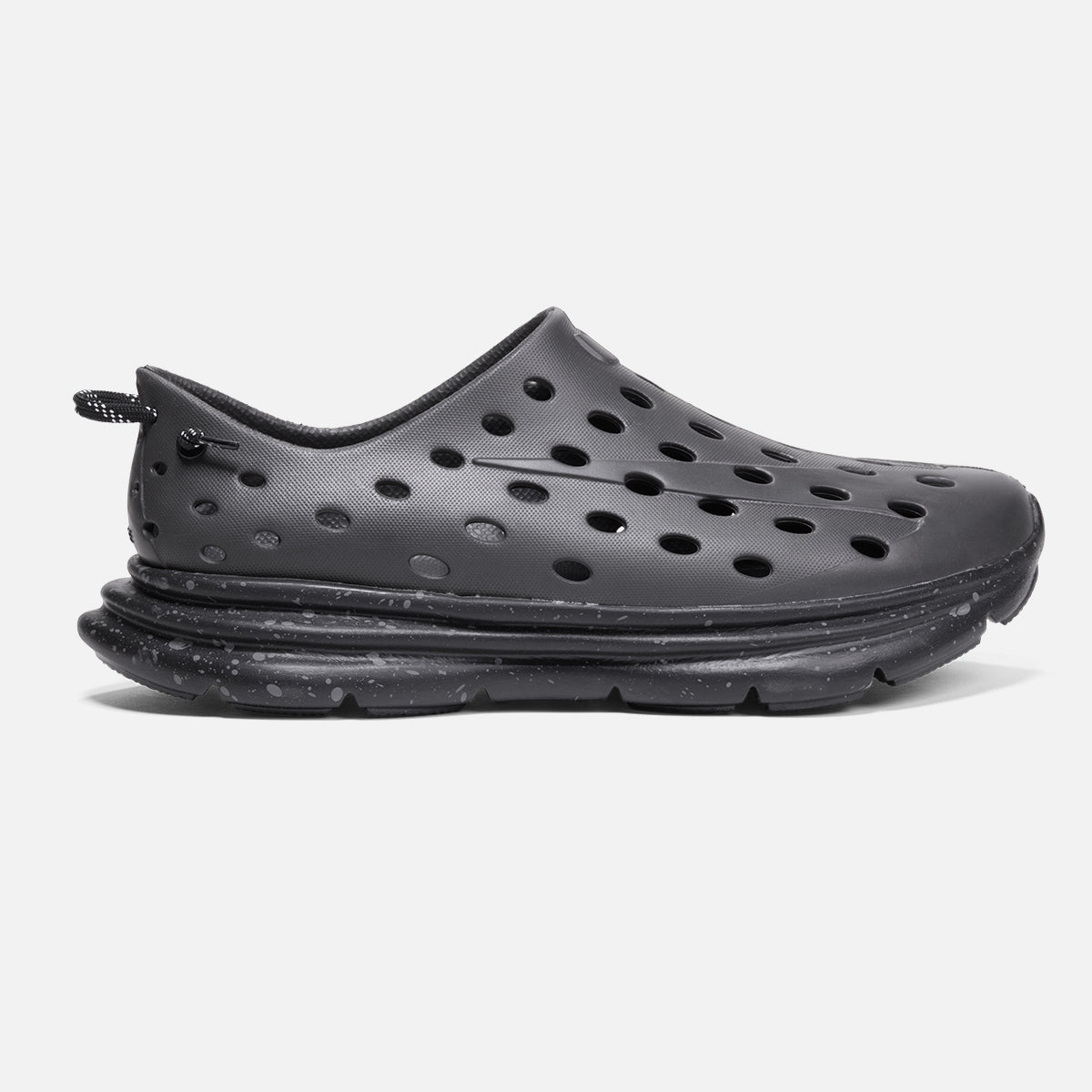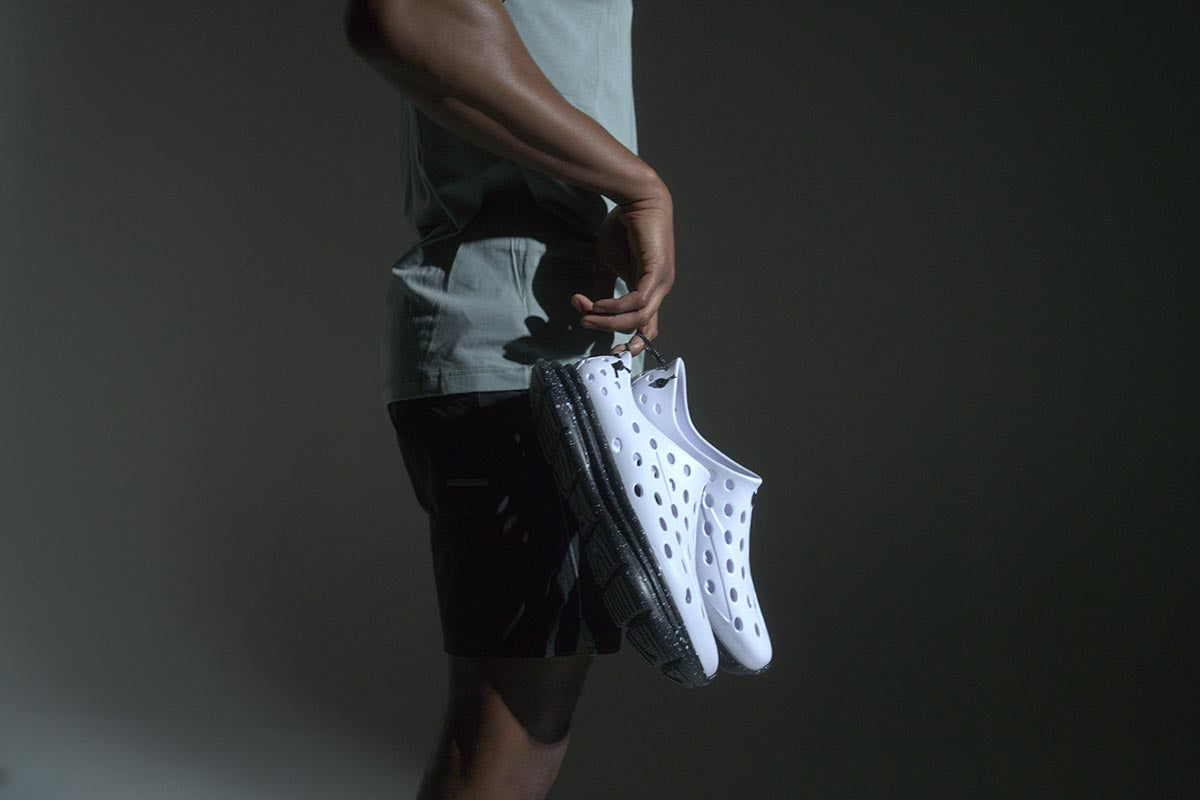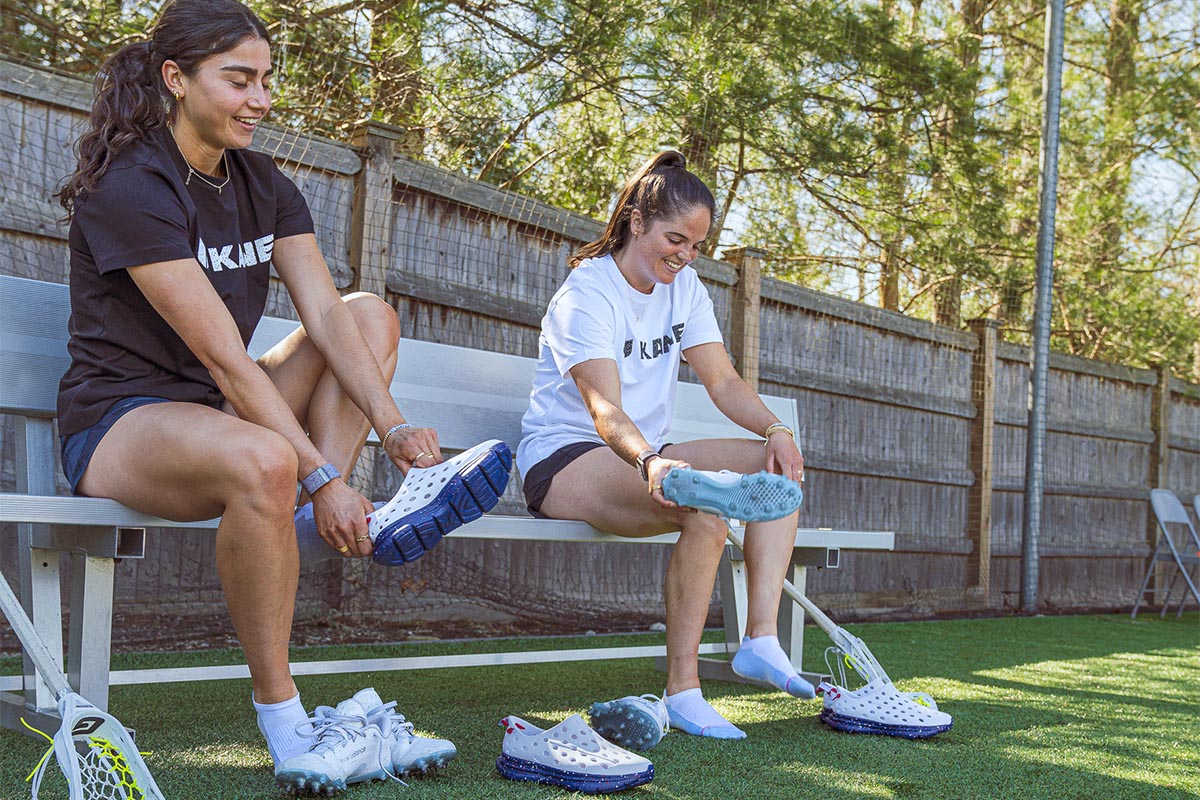Comfortable footwear may not have been traditionally top-of-mind for desk workers. But that all changed with the advent of the standing desk. Standing desk users have distinct needs to feel comfortable and supported. The right pair of shoes has become a crucial element of a day's work.
Whether you're clocking in long hours at work or cultivating a new home office routine, the best shoes for a standing desk can make all the difference. Follow these tips to ensure that your time spent at work is not only productive but remarkably comfortable.
The best shoes to wear at standing desks
Shoes that offer proper arch support, cushioned footbeds, ample toe room, and good ankle support are best for long periods of standing. An anti-fatigue mat can provide extra benefits by promoting circulation and reducing fatigue.
Lightweight shoes that offer midsole cushioning to reduce stress on the feet are often the best for a standing desk. Consider shoe material and make sure you're wearing the correct size. Don't wear high heels, which can lead to discomfort. Instead, standing desk users should consider loafers and other low-heeled, supportive shoes with an ample toe box and excellent arch support.
While standing barefoot can be beneficial for strengthening foot muscles, wearing shoes with proper support is advantageous, especially if you have concerns about arch support, heel issues, or overall foot health. Comfort should be your top priority when you choose shoes for a standing desk, whether or not you have special considerations such as flat feet, high arches, plantar fasciitis, or wider feet.
Footwear that relieves pressure on your feet, helps you maintain good posture, and prevents strain is a good bet. Consider features like breathability (like a shoe with a mesh upper), fit, and style to balance comfort and support. Open footwear like sandals and flip-flops can be appropriate if they offer adequate support and cushioning.
Many brands offer stylish yet ergonomic shoes suitable for standing all day. If you need dress shoes for prolonged standing, look for cushioned insoles, shock absorption, and a supportive heel counter.
What to consider when choosing shoes for standing desks
Working at a standing desk requires special consideration when it comes to footwear. Here are some things to keep in mind when choosing shoes for your workday:
Comfortable sneakers
Choose a pair with ample arch support and cushioning when opting for sneakers. The arch support helps maintain the natural alignment of your feet while cushioning absorbs impact, reducing stress on your joints. Additionally, a flexible sole allows for ease of movement, accommodating the shifts and adjustments your body naturally makes during prolonged standing.
Running shoes
Athletic shoes, particularly those designed for running or walking, often incorporate features that facilitate extended periods of standing. Look for shoes with supportive features, such as cushioned insoles, breathable materials, and a durable, grippy, non-marking sole for slip resistance and stability.
Orthopedic shoes
Orthopedic shoes can be a game-changer if you have specific foot issues or need maximum support. These shoes are crafted to provide stability and alleviate discomfort. They often feature customizable insoles and supportive designs tailored to promote foot health.
Gel inserts
Use gel inserts or custom orthotics to improve the comfort of shoes you already own. Gel inserts provide additional cushioning, absorbing shock and reducing the strain on your feet. They are particularly beneficial for those needing extra support.
Low-heeled shoes
Steer clear of high heels, as they can contribute to discomfort and fatigue over time. Instead, opt for low-heeled shoes or flats with adequate arch support. Lower heels help distribute your body weight more evenly, reducing strain on your feet and promoting a more natural posture.
Anti-fatigue mats
Complement your footwear choice with an anti-fatigue mat to stand on while working at your standing desk. These mats are designed to cushion your feet and reduce the pressure on your legs, enhancing overall comfort. They can be especially beneficial on hard surfaces, providing a supportive layer between your feet and the ground.
Rotate shoes
To prevent overuse of specific muscles and joints, consider rotating between different pairs of shoes throughout the week. This practice allows your feet to experience varying levels of support and comfort, preventing strain from repetitive use.
Consider your environment
Consider any workplace safety requirements or dress codes when selecting your shoes. Ensure your footwear complies with these regulations and prioritize comfort and support. Explore professional or business-casual options that align with your workplace standards if needed.
Recovery shoes
Recovery shoes can be an excellent option at a standing desk, especially for individuals looking for comfort and support to alleviate pain and fatigue. These shoes provide the necessary cushioning and structure to maintain posture and reduce tension while standing at a desk.
Discover Kane Recovery Shoes!
Kane’s recovery shoes provide excellent support, comfort, and durability for those in need of top-notch recuperative footwear. Featuring an adjustable hook-and-loop single strap synthetic upper, plush TPR footbed, as well as a durable injected EVA outsole, these kicks come with all the right features to assist you during your rehabilitation journey.
Aside from providing quality products, they are also committed to sustainability, having made plans to become a B Corp while dedicating 1% of their overall profits towards environmental charities.
When and how to wear Kane Revive
The best moment to wear most recovery shoes is directly after a strenuous activity such as running or exercising. This helps minimize inflammation and launch the healing process. To guarantee maximum comfort and effective recuperation, make sure that you are wearing your recovery footwear correctly by tying up laces securely for a snug fit around your feet.
The importance of ankle support
Ankle support is essential when choosing shoes for a standing desk, as it can help reduce pain and discomfort associated with prolonged standing.
Shoes with arch support, such as sneakers, tennis shoes, and hiking boots, often provide inbuilt features like arch supports that cradle your ankles to alleviate pain and discomfort. Additionally, shoes with solid and shock-absorbent soles can help reduce pressure on the lower back, hips, and legs, minimizing muscle cramps and joint pains resulting from long periods of standing.
Ensuring the shoes fit correctly is crucial for ankle support and overall comfort when standing at a desk. Too tight or loose shoes can lead to discomfort and potential foot issues over time. Therefore, selecting the correct shoe size (and looking for brands that offer half sizes for more range) is essential for adequate support and stability while standing for long periods.
Prioritize features like arch support, cushioning, breathability, traction, and proper fit when selecting shoes for a standing desk to maintain good posture and reduce strain on your feet and ankles.
9 benefits of wearing the right shoes at a standing desk
Wearing well-fitting shoes at a standing desk can benefit your comfort, health, and productivity.
Nine key advantages of donning the right pair of shoes at a standing desk include:
1. Support and stability
The proper shoes support your feet, maintaining their natural arch and alignment. This support extends to your ankles and can contribute to overall stability, reducing the risk of slips or discomfort.
2. Cushioning and shock absorption
Shoes with adequate cushioning help absorb the impact of standing on hard surfaces, reducing stress on your joints. This can alleviate discomfort in your feet, knees, and lower back.
3. Improved posture
Well-designed shoes promote better posture by helping distribute your body weight evenly. Better alignment reduces the strain on your spine and muscles, preventing fatigue and potential long-term posture-related issues.
4. Prevention of foot fatigue
Well-fitting shoes can prevent foot fatigue by providing proper arch support and cushioning. This is especially important during long periods of standing and can help you stay more alert and focused on your job — not foot pain.
5. Reduced risk of injuries
Well-fitting shoes contribute to a lower risk of injuries such as sprains or strains. They provide a protective barrier for your feet and can help prevent accidents in the workplace.
6. Increased energy and productivity
Comfortable footwear can boost your energy levels and overall productivity. When your feet are well-supported, you're less likely to feel tired or distracted, allowing you to concentrate better on your work.
7. Adaptation to the environment
Shoes can provide insulation and protection, making standing on different types of surfaces more comfortable. This is particularly relevant in workplaces with hard or uneven flooring.
8. Compliance with workplace standards
In some professional settings, wearing shoes may be a requirement due to safety or hygiene standards. Choosing appropriate footwear ensures you comply with workplace regulations while prioritizing comfort.
9. Versatility and adaptability
The right shoes can adapt to various work scenarios, whether standing at a desk, moving around the office, or attending meetings. This versatility makes them a practical choice for a dynamic work environment.
While there are many advantages of wearing shoes at a standing desk, above all else, choose footwear that suits your specific needs and preferences. Consider comfort, support, and the nature of your workplace when selecting the best shoes for your standing desk routine.
Frequently asked questions
What is the best shoe for standing all day?
The most comfortable shoes for standing all day include super comfy sneakers or athletic shoes that provide ample cushioning, support, and shock absorption to reduce foot fatigue and discomfort.
Look for features like a supportive midsole, good arch support, cushioned insoles made from materials like memory foam or gel, breathability from materials like mesh or perforated leather to keep feet cool, and stability with a broader base and firm heel counter.
Many well-known brands sell options that provide all-day comfort. Experiment with different brands and styles to find the right choice. Shoes with features like arch support, plenty of room for toes, and shock absorption are your best bet to stay comfortable during long hours of standing and everyday wear.
Do you need shoes for standing desk?
Choosing to wear shoes or go barefoot is a matter of personal preference. While some individuals find standing barefoot beneficial for strengthening foot muscles and improving balance, others prefer wearing shoes for support and protection.
Standing barefoot can activate muscles in the feet that may lead to improved posture and balance. Still, it can also cause discomfort, fatigue, and potential hygiene concerns, depending on the environment you're working in.
Wearing good shoes at a standing desk offers benefits such as enhanced arch support, traction, shock absorption, improved posture, comfort, safety from workplace hazards, and reduced foot pain.
Shoes with proper arch support and cushioned soles can help alleviate muscle fatigue and provide a better foundation for prolonged standing. Additionally, shoes with strong shock-absorbent soles and arch support are recommended to reduce pressure on the lower back, hips, and legs while standing.
Are barefoot shoes good for people who stand all day?
Standing all day in barefoot shoes can be a solid choice for individuals with strong, conditioned feet, as it can help activate muscles that may be inactive when wearing standard shoes.
These shoes replicate the sensation of walking without shoes, promoting a more natural gait and improving foot stability and strength. However, they typically offer minimal padding compared to traditional shoes, which may not provide adequate cushioning for prolonged standing, especially on rough surfaces.
For those new to barefoot shoes or concerned about discomfort, starting with a thicker sole option or adding an insole without a heel rise can help ease the transition. Gradually increasing the time spent donning barefoot shoes and considering alternatives like cushioned work shoes or orthopedic shoes with arch support may benefit individuals who need more support and cushioning while standing for extended periods.
What are some tips for standing comfortably at a desk?
To work comfortably at a standing desk:
- Maintain proper posture: Stand straight with your back aligned, and avoid excessive bending forward or backward to prevent pain.
- Adjust screen height: Position your computer screen at eye level to prevent strain on your back and neck muscles. Tilt the screen slightly backward for optimal viewing.
- Foot position: Keep your feet flat on the floor, slightly apart and aligned with your hips. Point your toes towards the desk to maintain an upright posture. Consider using an anti-fatigue mat for added comfort.
- Use memory settings: If available, use memory settings on your standing desk to easily switch between seated and standing positions for improved comfort.
- Alternate sitting and standing: Studies recommend alternating between sitting and standing to avoid adverse health effects. Aim for a ratio of 1:1 or 2:1, standing for 30 to 45 minutes every hour during an eight-hour workday.
- Footwear: Wear comfortable shoes that support your feet. Opt for quality shoes that provide cushioning and support.







































